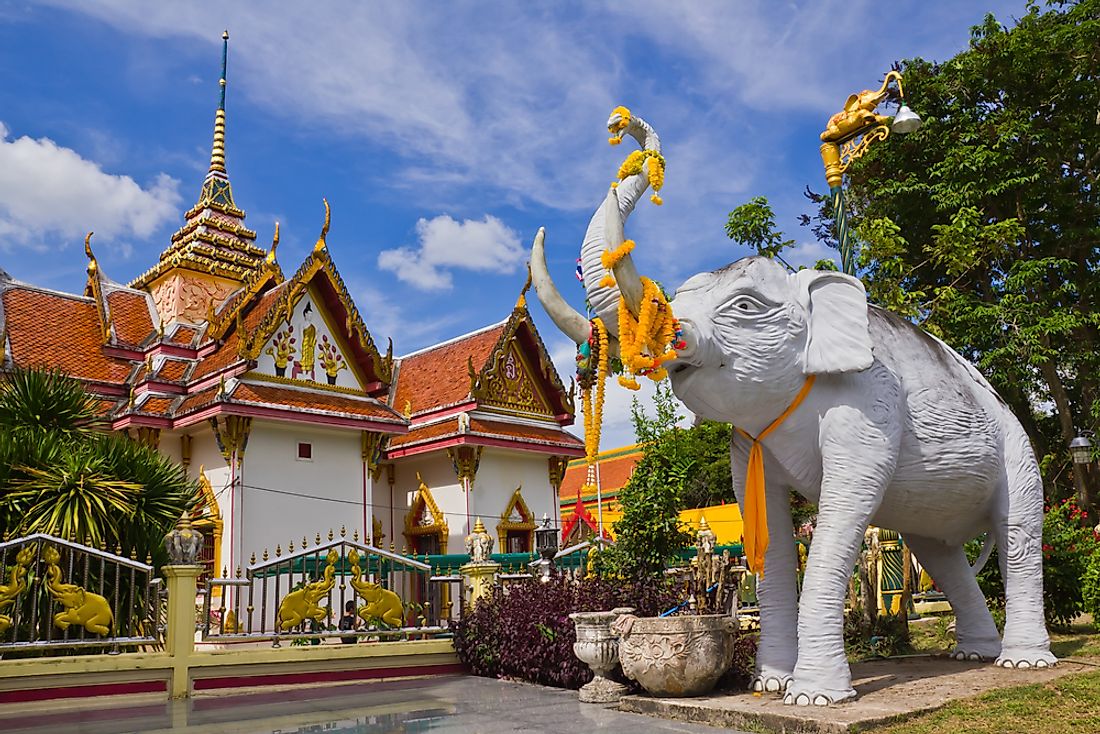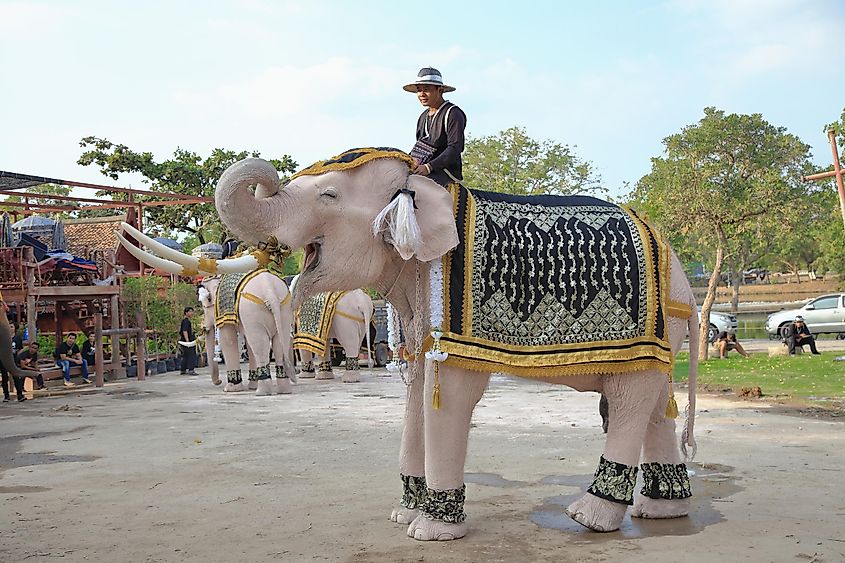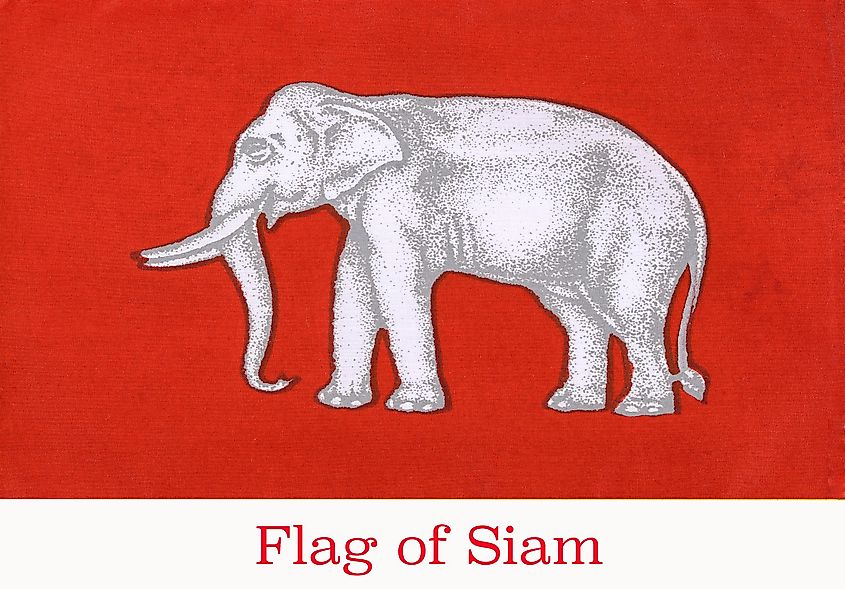Which Country Is Known As The Land Of White Elephants?

- Thailand is known as the land of the white elephant.
- White elephants are not a distinct species, but rather elephants with unusually light skin.
- In Thai culture, white elephants in the king's possession represent the power and prosperity of his reign.
Thailand is often called the land of white elephants because the Thai royal family possesses several white elephants, but the official name for the country is the Kingdom of Thailand. It is a unitary state bordered to the south by Malaysia, to the east by Cambodia and Laos, to the north and northwest by Myanmar, and to the southwest by the Andaman Sea. The nation occupies an estimated landmass of 198,116.7 square miles (513,120 sq. km) and is home to almost 70 million people, making it the 20th most populous country in the world.
Identifying White Elephants
White elephants are not a distinct species of elephant, but rather an elephant with exceptionally light skin, usually reddish-brown that turns pink when it is wet. The Thai people use the term Chang samkhan which means “auspicious elephant,” or “white” meaning purity and less so their actual color. The term is often mistakenly attributed as meaning “albino elephant.”
Once a light-skinned elephant is captured from the wild, it is evaluated by royal palace experts who determine whether the elephant is “auspicious” or not: the toes, eyelashes, eyes, palate, and reproductive organ must be light as well, and the elephant’s behavior must be suitable. If an elephant is determined to be auspicious, it is offered to the king. The current king of Thailand possesses 11 white elephants.
Symbolism
White elephants are regarded as holy creatures in Thailand and Myanmar, as they were historically in Cambodia and Laos as well.
Today, the white elephant is a symbol of divine and royal power in the country, so the more white elephants the ing possesses, the more powerful and prosperous his reign is considered to be. Ownership of a white elephant symbolizes wealth, success, royalty, political power, wisdom, and prosperity.

Historical Meaning
Indian and Thai venerations of white elephants date back to the 17th century. Historians reference the Siamese-Burmese War in 1563 that broke out when King Chakkraphat, ruler of Thailand which was called Siam at the time, declined to give some of his kingdom’s white elephants to the Burmese King. The resulting war was called the War of the White Elephant.
Past Thai Kings were also known to give white elephants to subordinates with whom they were dissatisfied. The gift of a white elephant would often cause financial ruin for the recipient due to the cost of maintaining it, since they were considered sacred so they could not be put to work, given away or killed. In the old Siam Kingdom, declining a white elephant as a gift was frowned upon as it was considered to be discourteous, so the recipient had no choice but to accept the inconvenient “gift.”

In a western context, the expression “white elephant” comes from this phenomenon. It refers to a possession that is unreasonably expensive but with little value or even troublesome to keep.
Criticism Of White Elephant Ownership
The ownership of white elephants has been subject to criticism despite the Thai royal family’s obsession with rearing the animals. Many have pointed to the high cost of maintenance that is considered uneconomical in a country where a significant portion of the population still lives in poverty. Animal rights activists have also voiced concern over the traumatic movement of white elephants from their natural habitat to Thai conservation centers that are under the Thai royal patronage.











